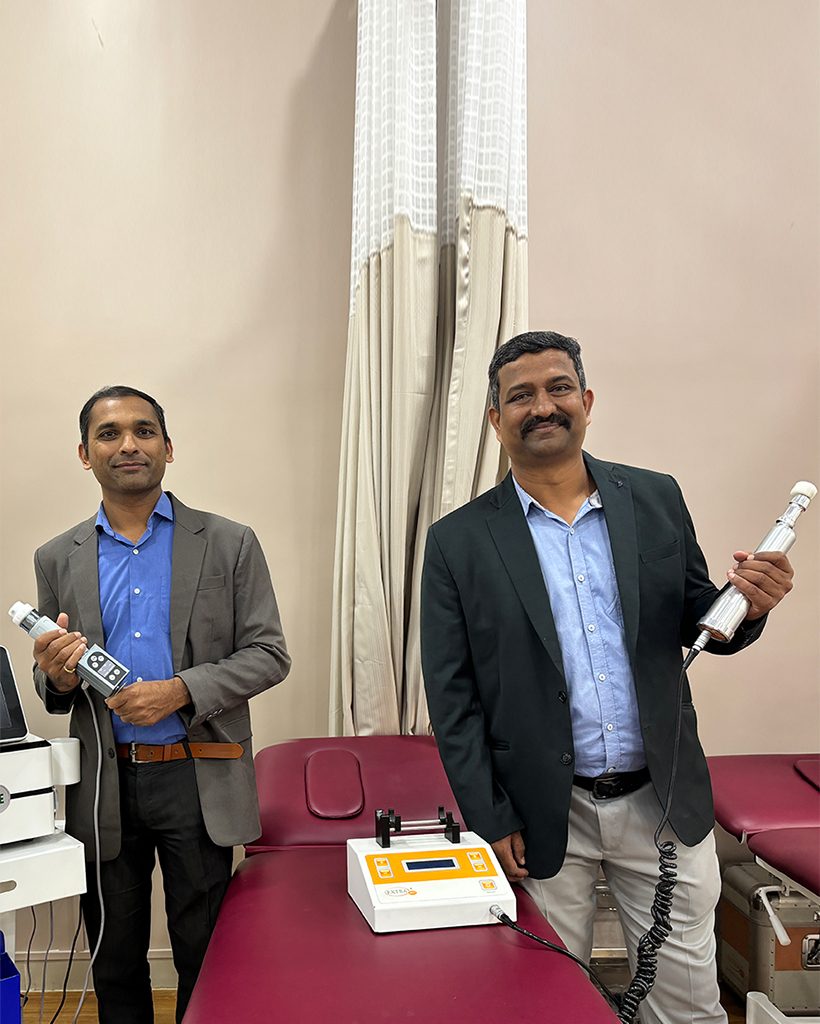FAQ
- Home
- FAQ

FAQ
Spinal Conditions
• Aging and degeneration
• Poor posture or ergonomics
• Injury or trauma
• Genetic predisposition
• Inflammatory diseases (e.g., arthritis)
• Pregnancy-related changes
• Back or neck pain
• Numbness or tingling in limbs
• Muscle weakness
• Reduced mobility or stiffness
• Shooting pain (e.g., down the leg in sciatica)
• Postural imbalance
• Physical examination
• X-rays, MRI, or CT scans
• Nerve conduction studies
• Postural and gait analysis
• Conservative therapies: Physical therapy, ZRT Matrix Therapy, chiropractic care
• Medications: Pain relievers, anti-inflammatories, muscle relaxants
• Injections: Corticosteroids or nerve blocks
• Surgical options: Discectomy, laminectomy, spinal fusion (for severe cases)
No. Most spinal conditions can be managed with non-surgical treatments, especially if diagnosed early. Surgery is considered when:
• Conservative treatments fail
• There is severe nerve compression
• There is loss of bladder/bowel control or progressive weakness
Innovative Healing : Advanced Modalities at Our Physiotherapy Clinic
Smart Tecar Wave Therapy combines Tecar Therapy, Electrical Muscle Stimulation (EMS), and Vacuum Electrodes. Tecar uses radiofrequency to stimulate deep tissue healing, while EMS promotes muscle contractions to enhance strength and lymphatic drainage. The synergy of these technologies accelerates recovery and improves circulation.
Some patients may feel slight discomfort during Radial Shockwave Therapy (RSWT), but it is generally well tolerated. The discomfort typically reduces as the healing process progresses.
ZRT Matrix Therapy focuses on cellular-level regeneration by optimizing the extracellular matrix. It uses mechanical vibrations to activate microcirculation, detoxify tissues, and normalize muscle tone offering a unique approach to long-term pain and neurological conditions.
This device combines ultrasound therapy with electrical stimulation (TENS, IFT) to reduce pain, improve healing, and enhance muscular strength. It’s highly adaptable and effective in both acute and chronic cases.
Yes, EMTT is a non-invasive, painless therapy approved for clinical use in musculoskeletal conditions. It uses high-frequency electromagnetic fields to promote bone healing, reduce inflammation, and regenerate soft tissue .
Absolutely. Each modality is grounded in peer-reviewed research and follows international physiotherapy and rehabilitation guidelines. They are FDA or CE-certified for clinical use and backed by physiological studies.
Yes. A multi-modal approach often yields the best results. Therapists assess individual cases to combine therapies like Tecar with Shockwave or EMTT with Matrix Therapy, optimizing outcomes.
Treatment plans vary based on diagnosis, chronicity, and individual response. Typically, 6 to 12 sessions are recommended, with progress reassessed periodically.
These therapies are safe and non-invasive, with minimal side effects.
Not necessarily better but more efficient when integrated with traditional physiotherapy. Manual therapy, exercise rehab, and these modalities work in harmony to address pain, function, and root causes faster.
Chiropractic treatment in spinal conditions
Chiropractors commonly treat conditions such as herniated discs, sciatica, spinal stenosis, scoliosis, degenerative disc disease, and mechanical low back or neck pain. They focus on restoring spinal alignment, reducing nerve irritation, and improving overall function.
Yes, chiropractic care is generally safe when performed by a licensed and trained practitioner. Before any treatment, chiropractors perform a thorough evaluation to determine the safest and most effective approach for your specific spinal condition. Serious complications are rare.
Most spinal adjustments are painless, and many patients feel immediate relief. Some may experience mild soreness or stiffness after an adjustment, similar to what you might feel after a workout. This usually resolves within 24–48 hours.
The number of sessions varies depending on the severity and type of spinal condition, your response to treatment, and your overall health. Some people feel better after a few visits, while others may need a longer care plan for chronic or complex issues.
Yes, regular chiropractic care can help maintain proper spinal alignment, reduce strain on joints and muscles, and improve posture. Combined with exercise and ergonomic habits, chiropractic maintenance care can help prevent recurrence of spinal issues.
